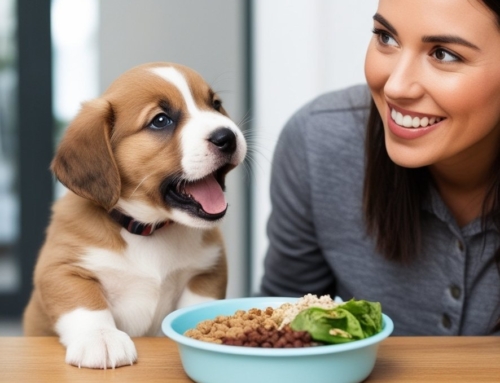Let’s just be honest—sometimes we grab that bag of dog food without thinking twice. It says “premium” or “all-natural,” and we just want to believe it. But here’s the thing: not everything shiny is gold, right? (Or however that saying goes.) Underneath the glossy packaging and promises of “top nutrition,” there are sneaky little secrets that can mess with your dog’s health. And you’d be surprised how easy it is to overlook. I mean, we trust these companies, but should we? Probably not as much as we do.
Table of Contents:
Dog Food Labels Aren’t Always What They Seem
Reading labels is supposed to be simple—until you realize that half of the ingredients are things you can’t pronounce. It’s like dog food companies think we’re chemists! Seriously, when’s the last time you picked up a bag and went, “Mmm, ethoxyquin, sounds delicious.” Exactly. This is where it gets sketchy. If your dog’s food contains **meat by-products**, what are we really talking about? Bones, beaks, maybe even some mystery organs (ugh)? Just because it’s technically “meat” doesn’t mean it’s *real* meat. It’s like ordering a steak and getting a hotdog.
Now, it’s not just about the by-products. There’s a whole army of chemicals with terrifying names hiding in those kibbles, things like **BHT** and **BHA**. These aren’t your run-of-the-mill preservatives—they’ve been linked to cancer. Yeah, *cancer*. And still, these foods line the shelves. Makes you wonder, doesn’t it?
That Time I Almost Fell for It
I’ll admit, I used to buy this one popular brand (won’t name names, but you know the one with the super cute commercials). I thought, “They wouldn’t sell it if it wasn’t safe, right?” WRONG. My dog started having these weird digestion issues—vomiting, lethargy. At first, I thought it was just him getting older. Nope. After a bit of digging (and by digging, I mean staying up way too late reading sketchy pet forums), I realized the food was filled with cheap fillers like **corn** and **soy**. Basically, stuff that has zero nutritional value but takes up space.
It’s the same with those so-called **artificial flavors and colors**—they make the food look and taste better (to the dog, not to us—because dog food definitely does *not* smell good). But underneath all that coloring? Empty calories. Junk food in a shiny suit.
What About Real Dog Nutrition?
If you’re like me, sometimes you wish you could just throw a steak on the grill for your dog and be done with it. Sadly, that’s not realistic (and honestly, some of us barely have time to feed ourselves!). But here’s the thing: your dog needs whole, real foods. Not filler. Not synthetic crap. Just… food. Plain and simple.
When you’re picking a dog food, look for brands that have **real, named meat** as the first ingredient. If it says “chicken meal,” fine, but avoid anything vague like “animal meal” or “poultry by-products.” Also—here’s a little-known secret—be wary of the foods that boast being grain-free. Sounds good, right? But there’s been this weird rise in heart disease in dogs linked to grain-free diets. Something about replacing grains with legumes that might be messing up taurine levels. Scary, right? So don’t just assume that grain-free equals healthier.
Dangerous Chemicals You Probably Didn’t Know Were There
Here’s something they don’t tell you on the label: dog food might contain chemicals you wouldn’t dream of feeding to a living creature. I’m talking about stuff like **propylene glycol**—yep, the same stuff found in antifreeze. What’s it doing in dog food? It’s used to keep moisture in the kibble, but over time, it can mess with your dog’s blood cells. What’s even worse, it’s approved for use. Mind-boggling, I know.
And don’t get me started on **carrageenan**. That innocent-sounding word? It’s in a ton of wet dog foods, and it’s been linked to gastrointestinal inflammation. Imagine your dog eating something that could literally be tearing up its insides. I don’t know about you, but I wouldn’t feed that to my worst enemy, let alone my dog.
Feeding Your Dog the “Right Way” Is a Puzzle
Now, let’s talk about rotational feeding. (Sounds fancy, but it’s really just common sense.) You wouldn’t eat the same thing every day, right? So why should your dog? Changing up your dog’s food every few months not only keeps them interested—let’s be real, even dogs get bored—it also helps prevent allergies and food sensitivities from developing. It’s like giving your dog’s body a break from one thing before it starts to cause problems. And yet, this isn’t something that’s widely advertised. Why? Because food companies want you to buy the same product, again and again.
My Go-To Brands? Well…
Okay, so I’m not here to shill for any brands, but if you’re looking for something safe, **Orijen** and **The Honest Kitchen** are pretty solid. They use whole ingredients, no funny business. No chemicals you’d need a PhD to understand. Sure, they’re pricier than the supermarket stuff, but if you can swing it, it’s worth the peace of mind. Besides, cheaper food can cost you more in vet bills later, trust me on this one.
In the end, your dog depends on you. They don’t get to choose what they eat (well, unless they’re one of those pups that sneaks food from the table, in which case… good luck). But when you’re in control of what goes into their bowl, you’ve got to be smart about it. Question the labels. Dig deeper. And don’t be fooled by marketing. Because at the end of the day, a bag of dog food isn’t just dog food. It’s either a pathway to health—or a ticking time bomb. You get to decide which one it’s gonna be.





